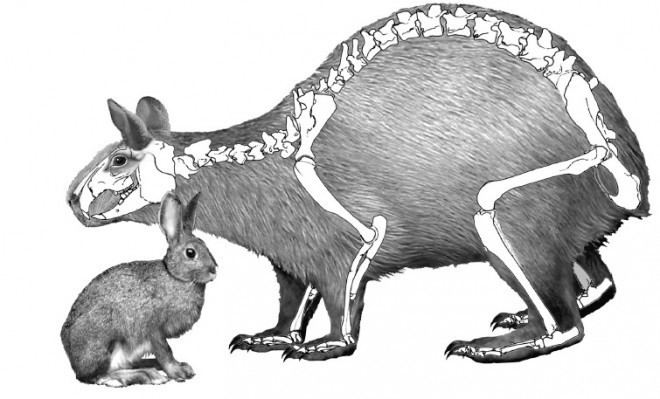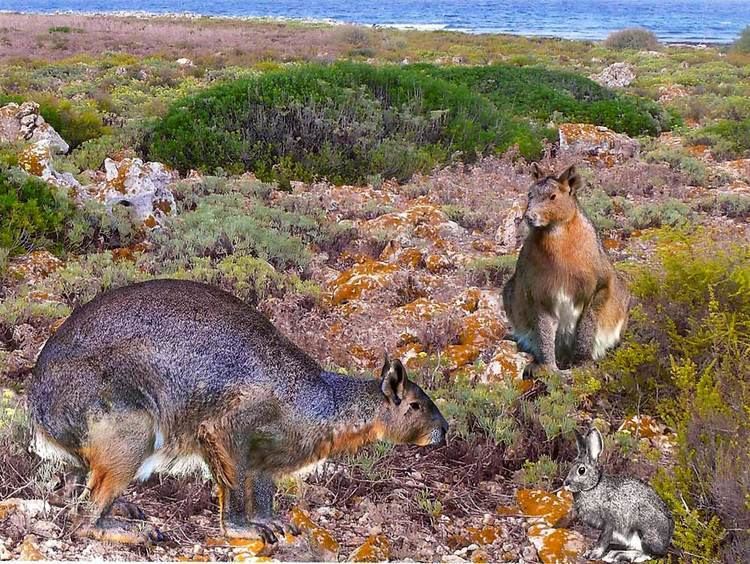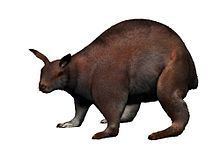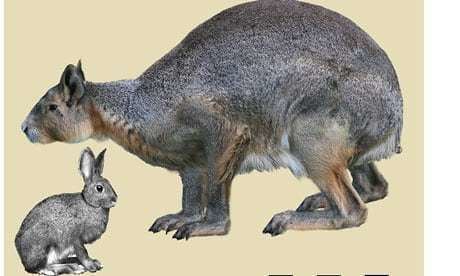Phylum Chordata Order Hares, pikas, and rabbits | Species † N. rex Rank Genus | |
 | ||
Similar | ||
Nuralagus rex, occasionally called the Minorcan giant lagomorph, is an extinct rabbit that lived in the island of Minorca from the Messinian until around the middle of the Pliocene, when it became extinct (5 to 3 million years ago) when Majorca and Minorca were united as one island, letting the goat-like ungulate Myotragus balearicus colonize Nuralagus's habitat.
Contents

Physical Attributes
Nuralagus rex was very different from modern rabbits. With a height of half a meter and an estimated weight of 12 kg (26 lb), the species differed in size from all other noted fossils, and currently existing leporids. Nuralagus rex was six times the weight of the extant European rabbit (Oryctolagus cuniculus) and could weigh up to 23 kg (51 lb) It had a comparatively small skull and small sensory receptors. The small eyes and ears of this species are unlike those of modern rabbits. Nuralagus rex had a short stiff spine which resulted in low mobility and inability to jump. Due to the absence of predators on Minorca, this rabbit experienced what has been called the “island rule”. This rule states that big animals living on an island with scarce resources tend to evolve smaller and small animals living with no predators tend to evolve larger.
Evolution

Nuralagus rex entered land constituting Minorca during the Messinian Salinity Crisis 5.3 million years ago. During this event, the desiccation of the Mediterranean Sea connected the island to mainland Spain, allowing Nuralagus's’ ancestor to colonize the area. The subsequent Zanclean flood then returned the Mediterranean to its original sea levels, isolating Nuralagus's ancestor on Minorca. Nuralagus’s divergence from its ancestor corresponds to the general increase in leporid diversity found in the Pliocene. Although the time of its extinction is uncertain, it possibly coincided with the general decrease in leporid diversity found in the Holocene.

There is a dearth of knowledge about the evolutionary history of Nuralagus rex in relation to other lagomorphs. However, similarities between the dental morphology of Nuralagus and Eurasian members of the extinct genus Alilepus have led to speculation that Alilepus is closely related to and, possibly, the ancestor of Nuralagus. The theory that Alilepus gave rise to Nuralagus is apparently contradicted Alilepus fossils found in Spain being dated back to the Quaternary period, well after Nuralagus would have been isolated on Minorca. Furthermore, Alilepus remains in areas other than Spain have been determined to be much older than Spanish specimens, implying that the genus arrived in Spain after its inception. This opposes the idea that an ancestor of Alilepus living in Spain was also the ancestor of Nuralagus. On the other hand, Trischizolagus, an extinct genus of lagomorph thought to be a possible ancestor of the European rabbit, is known to have lived in Iberia between 3 and 6 million years ago, coinciding with the Messinian Crisis. Therefore, it is possible that Trischizolagus is the ancestor of Nuralagus.

Nuralagus's unique traits were most likely the product of an insular environment containing no natural predators. Physical similarities between Nuralagus rex and Pentalagus furnessi (an extant insular lagomorph which until recently also did not have natural predators) despite the phylogenetic and geographical distance between the two species further supports this inference.
Habitat
So far, all of the extant fossils have been found in the northwest of Minorca. N. rex appears to have lived in the scrublands of Minorca, subsisting primarily on roots and tubers.
